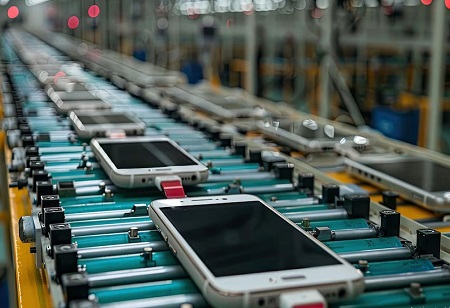
In a major change to global manufacturing tactics, Apple has produced iPhones valued at $22 billion in India over the 12-month span concluding in March 2025. The article, released by Bloomberg’s Mark Gurman, points out a significant 60% rise in production compared to last year—a strong sign of Apple’s growing emphasis on India as a manufacturing hub.
The report indicates that one out of every five iPhones, or 20% of Apple's worldwide iPhone production, is now processed in India. This marks a significant move in Apple’s wider objective of diversifying its supply chain and diminishing its strong dependence on Chinese production. India’s increasing significance in Apple’s production ecosystem was also highlighted recently by the IT and Electronics Minister Ashwini Vaishnaw, who disclosed that the company exported iPhones worth ₹1.5 trillion from India in the previous fiscal year.
A significant portion of Apple’s domestic manufacturing occurs at Foxconn’s large facility in Tamil Nadu, which continues to be the firm’s primary production center in the nation. Alongside Foxconn, Tata Group is emerging as a more significant participant in Apple’s operations in India. Tata currently operates two key factories—one located in Tamil Nadu and the other in Karnataka—following its acquisition of Wistron’s Indian division and management of Pegatron’s domestic operations.
Apple's expansion into India isn't solely focused on satisfying local demand. It’s also strategically linked to changes in global trade. Earlier this year, India experienced a significant increase in production and exports after former U.S. President Donald Trump announced suggested "reciprocal" tariffs on imported products. Although devices such as smartphones and computers were ultimately exempt from these tariffs, the political environment prompted companies like Apple to hasten their efforts to diversify production sites.
Bloomberg has observed that Apple could depend more on iPhones assembled in India for the U.S. market. This provides Apple with a competitive advantage, particularly as Chinese imports are still facing elevated tariffs—some of which hover around 145%. While smartphones are currently not subject to tariffs, Trump has indicated that this relief is temporary and that tariffs might be reinstated in a few months.
We use cookies to ensure you get the best experience on our website. Read more...